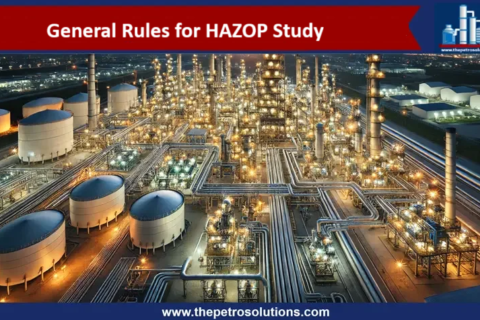Thermal cracking is the process in which heavy residue hydrocarbons are decomposed into lower molecule higher value hydrocarbon products, under severe thermal conditions in the absence of the catalyst. It is a very valuable process in upgrading the bottom of the barrel and can provide excellent conversion of vacuum or atmospheric residues when integrated with other refinery units. The thermal cracking process is relatively cheap as compared to the catalytic cracking processes.
Residuum hydrocracking is often combined with a thermal cracker to upgrade the “bottom of the barrel” and provide high-quality light and middle distillates. Thermal cracking of petroleum comes in the category of carbon rejection for residue conversion.
The feeds to thermal cracking are vacuum residue, atmospheric residue, and other refinery residues (Hydrocracker, FCC residues) while major thermal cracking products are LPG, gasoline & middle distillate. Further, high-quality fuel oil and coke can also be produced from the residue feeds. But thermal cracking products are highly olefinic, aromatic, and high sulphur content. They require hydrotreatment to improve their properties for desired product specifications.
Reaction Chemistry of Thermal Cracking Process
Thermal cracking is a free radical chain reaction. “A free radical is an atom or a group of atoms possessing unpaired electrons”. When heat is applied to the heavy hydrocarbons, they are decomposed and broken up into two or more free radicals. The free radicals then start a series of chemical reactions that produce a broad range of products from hydrogen to asphalt and coke. The radical mechanism is consistent with the fact that thermal cracking produces significant amounts of hydrogen, methane, ethane, ethylene, and higher olefin. The chain-reaction mechanism of thermal cracking includes the following steps:
1. Chain Initiation or radical formation
Due to direct thermal rupture of chemical bonds a single molecule breaks up into free radicals. These free radicals are highly reactive and react with other hydrocarbons. Also, decompose to olefins, combine with other radicals and react with metal surfaces.
R-RCH3=R*+RCH3*
C10H22 = C8H17*+ C2H5*
2. Propagation or hydrogen abstraction reaction:
In this step, a free radical abstracts hydrogen from another compound and turns into a different radical.
CH3* + CH3CH3 → CH4 + CH3CH2*
H2+R*=H*+RH
RCH2CH3 + H* = RCH2 CH2* + H2
RCH2CH2 + CH4 = RCH2CH3+CH3*
3. Radical addition
A radical attacks an olefin group, forming a C–C bond and a single larger free radical.

4. Radical decomposition (cracking)
A radical decomposes into an olefin or alkene and a smaller radical
CH3CH2* → CH2═CH2 + H*
5. Cyclization
Radicals with five or more carbons and an olefin group react with themselves to form ring compounds. At the high temperatures at which thermal cracking occurs, aromatics and polyaromatics are thermodynamically favoured, so saturated or partially saturated ring compounds readily undergo dehydrogenation and form aromatics.
6. Chain Termination Reactions
In these reactions two free radicals react with each other to produce the products—two common forms of termination reactions are recombination reactions (in which two radicals combine to form one molecule) and disproportionation reactions (in which one free-radical transfers a hydrogen atom to the other to produce an alkene and an alkane)
CH3* + CH3CH2* → CH3CH2CH3 CH3
CH2* + CH3CH2* → CH2═CH2 + CH3CH3
The smaller free radicals, hydrogen, methyl, and ethyl are more stable than the larger radicals. They will tend to capture a hydrogen atom from another hydrocarbon, thereby forming a saturated hydrocarbon and a new radical. In addition, many thermal cracking processes and many different chemical reactions occur simultaneously. Thus, an accurate explanation of the mechanism of the thermal cracking reactions is difficult. The primary reactions are the decomposition of higher molecular-weight species into lower-molecular-weight products.
Coke and bitumen are the final polymers. The molecules turn very large with significant cross-linkage. Hydrogen deficiency along with high molecular weight reduces their solubility in hydrocarbons. Cokes have a hydrogen-to-carbon ratio of nearly 2:1.
Commercial Thermal Cracking Processes or Types of Thermal Cracking
Vis-breaking
Visbreaking (viscosity breaking) is a mild thermal cracking operation that is used to reduce the viscosity of vacuum residue, other residues, or even asphalt to produce low-viscosity fuel oil. Visbreaking reduces the required amount of blending light gas oil as a cutter stock to meet the fuel oil specifications. In a typical visbreaking operation, a refinery residuum is passed through a furnace where it is heated to a temperature of 460~490°C under an outlet pressure of 90~100 psi or slightly above the atmosphere for a short time and quickly quenched and flashed in a plated column.
The visbreaking unit products including gases, gasoline, gas oil, and low-viscosity fuel oil are separated in a distillation column. These products are further processed in other downstream units or blended with other refinery products. Gases and naphtha are stabilized in a stabilizer section, gas oil may be hydrotreated and fuel oil is blended with other FO range products.
Coking
Coking unlike visbreaking involves the complete thermal conversion of the residue feed into lighter products and coke. Coke is a heavily condensed hydrocarbon with more than 90% carbon. The feed is typically a residuum, and the products are gases, naphtha, fuel oil, gas oil, and coke. The gas oil may be the major product of a coking operation that is a primary feedstock for catalytic cracking units. The coke obtained is usually used as a fuel but special uses, such as electrode manufacture, production of chemicals, and metallurgical coke are also possible.
Types of Coking Processes
The coking unit uses various methods depending on the products required by the users. Delayed coking and fluid coking plants are commonly employed in refineries.
Please view the table that shows the thermal cracking conditions, the purpose of the thermal cracking process, thermal cracking conversion, thermal cracking products, and product yield related to major thermal cracking processes Visbreaking, Delayed Coking, and Fluid Coking.

Delayed Coking is a semi-continuous process in which the residue feed is heated in a furnace (480~520 °C) and flashed into large drums where coke is deposited on the walls of these drums, and the rest of the products are separated by distillation. The coking drum provides the long residence time needed to allow the coking reactions to proceed and complete the coke formation. Once the coke drum is filled another empty drum is placed into service.
Fluid coking is a continuous process that uses the fluidized-solid technique to convert residue feed to more valuable products. The residuum is converted to coke by being sprayed into a fluidized bed of hot, fine coke particles, which permits the coking reactions to be conducted at higher temperatures and shorter contact times as compared to delayed coking. Moreover, these conditions result in decreased yields of coke; greater quantities of more valuable liquid products are recovered.
Fluid coking uses two pieces of equipment, a reactor, and a burner; coke particles are circulated between these two, and heat is transferred (generated by burning a portion of the coke) to the reactor. The reactor holds a bed of fluidized coke particles, and steam is introduced at the bottom of the reactor to fluidize the bed.
Flexicoking is also a continuous process that is a direct descendent of fluid coking. The unit uses the same configuration as the fluid coker but has a gasification section in which partial or complete coke can be gasified to produce refinery fuel gas.
For further information, discussion and queries please comment in the box below or contact us at admin@ or follow us on Facebook & LinkedIn.
Certified Functional Safety Professional (FSP, TÜV SÜD), Certified HAZOP & PHA Leader, LOPA Practitioner, and Specialist in SIL Verification & Functional Safety Lifecycle, with 18 years of professional experience in Plant Operations and Process Safety across Petroleum Refining and Fertilizer Complexes.
- Nasir Hussainhttps://thepetrosolutions.com/author/admin/
- Nasir Hussainhttps://thepetrosolutions.com/author/admin/
- Nasir Hussainhttps://thepetrosolutions.com/author/admin/
- Nasir Hussainhttps://thepetrosolutions.com/author/admin/






